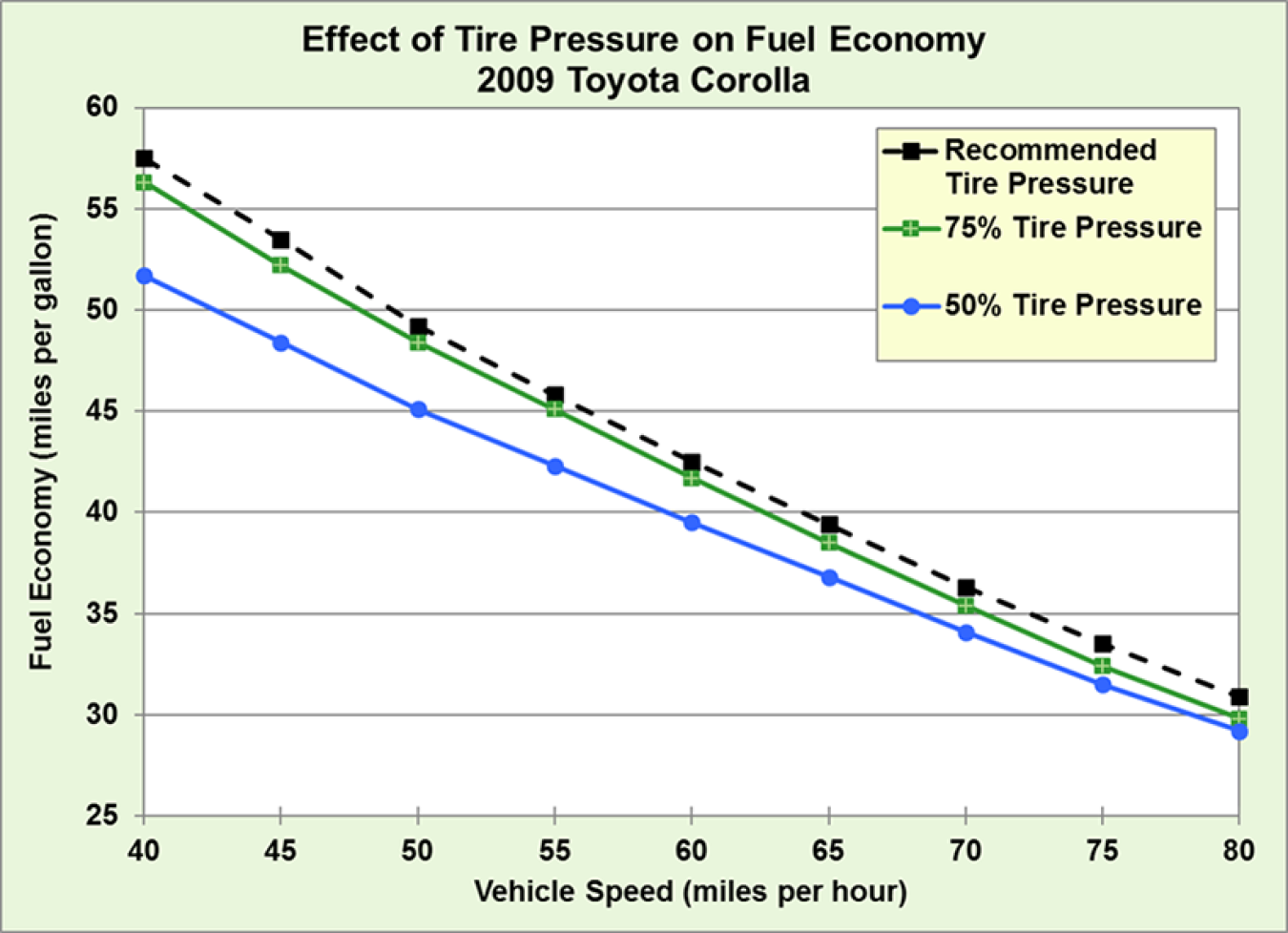Keeping automobile tires inflated to their recommended pressure saves fuel, according to an Oak Ridge National Laboratory study.
June 26, 2017SUBSCRIBE to the Fact of the Week
Keeping automobile tires inflated to their recommended pressure saves fuel, according to an Oak Ridge National Laboratory study. A 2009 Toyota Corolla was tested with all four tires at the recommended pressure (black line), then at 75% of the recommended pressure (green line), and again at 50% of the recommended pressure (blue line). With all four tires at 75% of the recommended pressure, a vehicle’s fuel economy is about 2-3% lower. Vehicles with tires inflated at 50% of the recommended pressure used 5–10% more fuel. It should be noted that underinflated tires not only waste fuel but also pose serious safety risks.
The Effect of Tire Pressure on Fuel Economy by Vehicle Speed

Note: The vehicle tests consisted of a warm-up phase to a target oil temperature, followed by a 50 mph cruise for five minutes and then operating the vehicle at steady speeds from 40 mph to 80 mph in 5 mph increments, with each speed held for at least 5.5 minutes. For additional detail on the individual tests, see the source listed below.
Source: Thomas, J., Huff, S., and West, B., "Fuel Economy and Emissions Effects of Low Tire Pressure, Open Windows, Roof Top and Hitch-Mounted Cargo, and Trailer," SAE5 International Journal of Passenger Cars - Mech. Syst. 7(2):2014, doi:10.4271/2014-01-1614.

